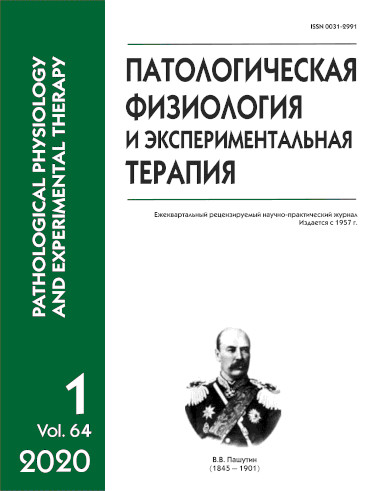The regenerative potential of stem cells from the whole bone marrow for the treatment of skin mechanical trauma in a murine model
Abstract
Introduction. Cultured mesenchymal stromal stem cells (MSSC), isolated from the bone marrow (BM) may be used to treat extensive wounds, but this treatment is very expensive, time consuming and possible only in several days after the injury. However, donor whole BM can be systemically administered directly after an injury without isolating MSSC because they are naturally contained in the BM. This is important for preventing death and disability of accident victims. The aim of the work was to study the therapeutic potential of donor whole BM transplanted to recipient mice after inflicting a mechanical trauma. Methods. On the next day after irradiation at a dose of 6.5 Gy, recipient C57BL/6 mice were subjected to a cut wound in the interscapulum and then injected intravenously with 100 μl of cell suspension of the donor whole BM carrying a marker gene of the green fluorescent protein, EGFP. Recipients were sacrificed in 1, 2, 3, 7, 11, 14, 21, 28, and 35 days after transplantation. The bottom of the wound and the scab on it and also areas of the skin adjacent to the wound were examined by fluorescent microscopy. The rate of colonization of these zones was compared to the rate of colonization of non-injured lumbar skin areas of these recipients and interscapular and lumbar regions of irradiated recipients without traumas. Results. Already on the next day after transplantation, the donor cells were detected in skin areas adjacent to the wound and on the bottom of the wound. In 7 days, massive wound colonization with various types of fluorescent cells was observed; at the same time, substantial amount of donor cells appeared in the non-injured lumbar skin of these recipients only in 11 days. The donor cells remained in the skin for at least 35 days after transplantation without any signs of elimination. Colonization of skin with the donor cells was slower in animals without than with wounds with a similar type of colonization in both of the studied zones (interscapular and lumbar). Conclusions. The study results suggested that damaged tissues secrete cytokines that are capable of attracting the majority of donor cells specifically to the wound. MSSC of the whole BM healed the wound very fast, which indicated that the MSSC transplantation immediately after a trauma is not inferior in effectiveness to the treatment with cultured MSSC and may be much superior in both promptness of the effect and cost-efficiency.






